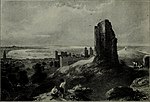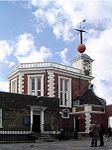Statue of Yuri Gagarin, Greenwich

The Statue of Yuri Gagarin in Greenwich, London, is a zinc statue depicting the cosmonaut wearing a spacesuit and standing on top of a globe. The figure was originally unveiled on 14 July 2011 at a temporary location in the Mall, close to Admiralty Arch and facing the statue of Captain James Cook. It was later moved to the Royal Observatory, Greenwich, at a site overlooking the Prime Meridian line, and was unveiled at the new location on 7 March 2013. There had been an unsuccessful proposal to move it to Manchester.The 3.5-metre (11 ft) high statue is a replica of an original by Anatoly Novikov in Lyubertsy, where Gagarin was trained as a foundry worker. The statue was a gift to the British Council from the Russian space agency Roscosmos as a part of several cultural events commemorating the 50th anniversary of the first human spaceflight. The original location of the statue was chosen to be where Gagarin first met the then Prime Minister Harold Macmillan.
Excerpt from the Wikipedia article Statue of Yuri Gagarin, Greenwich (License: CC BY-SA 3.0, Authors, Images).Statue of Yuri Gagarin, Greenwich
Duke Humphrey Road, London
Geographical coordinates (GPS) Address Website Nearby Places Show on map
Geographical coordinates (GPS)
| Latitude | Longitude |
|---|---|
| N 51.47731 ° | E -0.002345 ° |
Address
Greenwich Park
Duke Humphrey Road
SE10 8QY London (Royal Borough of Greenwich)
England, United Kingdom
Open on Google Maps








